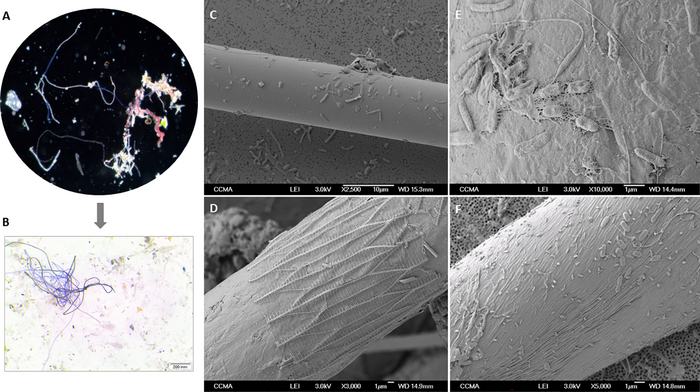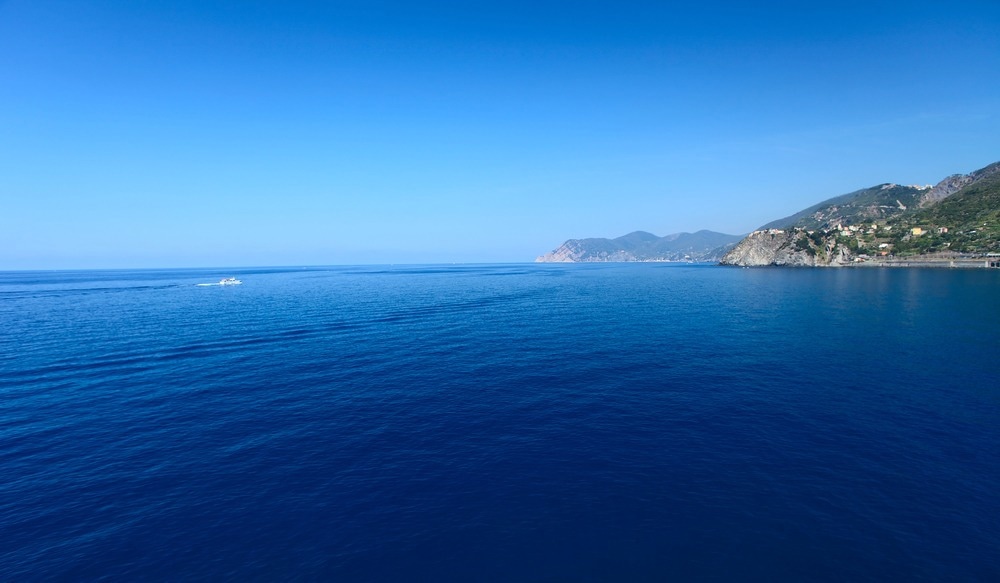Reviewed by Alex SmithDec 1 2022
According to a new study headed by Maria Luiza Pedrotti of Sorbonne Universite, nearly 200 species of bacteria tend to colonize microfibers present in the Mediterranean Sea. This includes a species that results in food poisoning in humans.

Photomicrograph of floating fibers collected from the coastal zone of the northwestern Mediterranean (A), and scanning electron microscopy (SEM) images of their bacterial communities (B), with elongated and rounded cells as well as Extracellular Polymeric Substances (EPS) (C-F). Image Credit: Pedrotti et al., 2022, PLOS ONE, CC-BY 4.0 (https://creativecommons.org/licenses/by/4.0/)
The study was reported in the open-access journal PLOS ONE on November 30th, 2022.
Natural and synthetic microfibers resulting from plastic pollution, the textile industry, and fishing activities have shown a considerable increase in the environment, thereby turning out to be the most common type of particles existing in the ocean.
These microfibers tend to pose a threat to aquatic health and ecosystems because after getting colonized by microorganisms for once, they tend to smell like food and are used up by marine organisms. As a result of their existence, microfibers probably tend to build up in marine organisms as they move via the food chain.
 Image Credit: Dudarev Mikhail/Shutterstock.com
Image Credit: Dudarev Mikhail/Shutterstock.com
To determine what kinds of bacteria live on floating microfibers, scientists made use of sophisticated microscopy methods and DNA sequencing to determine microorganisms surviving on microfibers that are gathered from the northwestern Mediterranean Sea.
On average, it was found that over 2,600 cells tend to live on each microfiber. Such cells belong to 195 bacterial species, such as Vibrio parahaemolyticus, a possibly risky bacterium resulting in food poisoning from seafood.
This new study is the first to report the presence of pathogenic Vibrio species on microfibers in the Mediterranean Sea. The discovery is important for assessing health risks because the bacterium’s presence can be a threat to bathing and seafood consumption.
Furthermore, the study increases the question of the environmental threat of microfibers. The emerging amount of persistent plastic waste in the surrounding might be transporting harmful bacteria and other pollutants across the ocean. This increases the threat of contamination than the short-lived natural particles like sediments or wood.
The role of climate change also has an influence on the spread of this potentially pathogenic bacteria. Studies have shown that temperature has a significant correlation with the increase of Vibrio spp and the emergence of infections. At the time we found this vibrio, coastal summer temperatures ranged from 25.2-26.5 °C, while this year, at the same location, they reached 29 °C.
Maria Luiza Pedrotti, Sorbonne Université
Journal Reference:
Pedrotti, M, L., et al. (2022) Vibrio spp and other potential pathogenic bacteria associated to microfibers in the North-Western Mediterranean Sea. PLOS One. doi.org/10.1371/journal.pone.0275284.